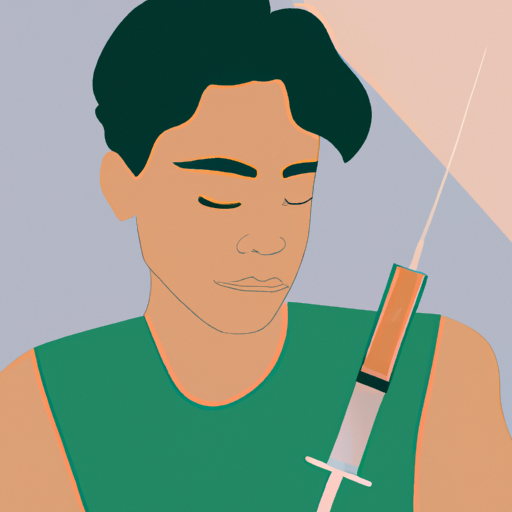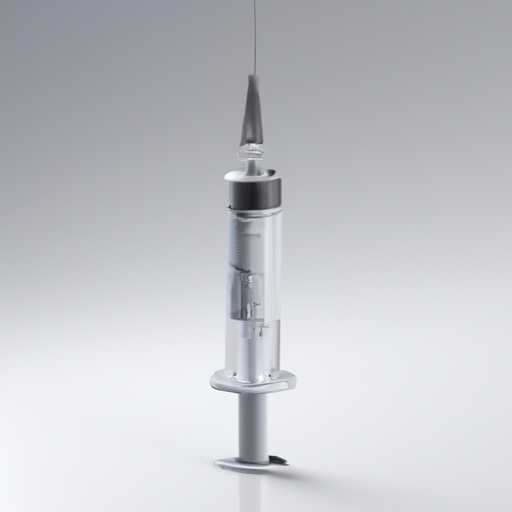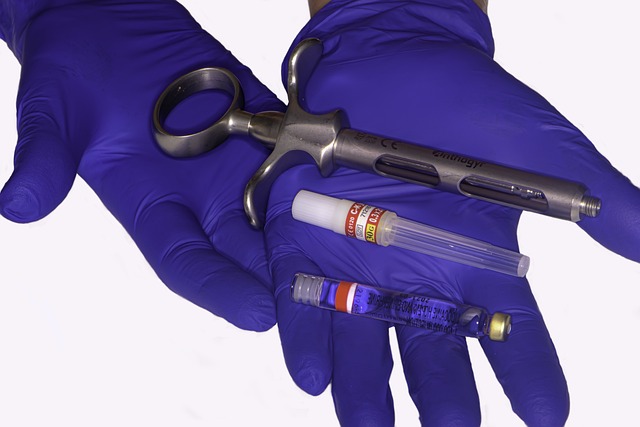This blog post delves into the world of needleless injections, exploring their various benefits in healthcare. From reducing the risk of needle-stick injuries to improving patient compliance, needleless injections are transforming medical procedures and disease prevention.
1. 'No Pain, More Gain': The Comfort Factor
Needleless injections offer a significant advantage when it comes to patient comfort. Unlike traditional injections that involve a needle piercing the skin, needleless injections use innovative technology to deliver medication without causing pain or discomfort. This factor alone can greatly enhance the patient experience and improve their overall satisfaction with the medical procedure.
The fear of needles is a common phobia that affects many individuals, leading to anxiety and avoidance of necessary medical treatments. Needleless injections provide a solution to this problem by eliminating the pain associated with traditional injections. Patients can now receive their medications without the fear of discomfort, allowing for a smoother and more positive healthcare experience.
Moreover, the comfort factor of needleless injections is particularly beneficial for pediatric patients, who often find injections to be distressing and uncomfortable. By reducing pain and anxiety, needleless injections can help children feel more at ease during medical procedures, making it easier for healthcare professionals to administer necessary medications and treatments.
Additionally, the comfort factor of needleless injections also benefits individuals with chronic conditions that require frequent injections. These patients often experience discomfort and pain from repeated needle insertions. By using needleless injection technology, healthcare providers can deliver medications more comfortably, promoting better adherence to treatment plans and improving the patient's overall quality of life.

1. Illustration depicting a patient experiencing less anxiety with needleless injections
2. Safety First: How Needleless Injections Reduce Risks?
Needleless injections offer a safer alternative to traditional needle injections. One of the main risks associated with needle injections is the potential for accidental needlestick injuries, which can expose healthcare providers to bloodborne pathogens or other infectious materials. With needleless injections, the risk of such injuries is significantly reduced as there is no physical needle involved in the process.
Furthermore, needlestick injuries can also occur to patients, especially when administering injections to highly sensitive areas or in situations where patients may move unexpectedly. Needleless injections eliminate this risk altogether, ensuring the safety and well-being of both healthcare providers and patients.
Another safety benefit of needleless injections is the reduced risk of infection. Traditional needle injections may introduce bacteria or other contaminants into the body, potentially leading to infections at the injection site. Needleless injections utilize advanced technology that eliminates the need for a needle, reducing the risk of contamination and infection.
In addition to preventing infections, needleless injections also reduce the risk of needle phobia-related complications. Individuals with a fear of needles may exhibit physical symptoms such as fainting, panic attacks, or high levels of anxiety when faced with traditional needle injections. By eliminating the need for needles, needleless injections help alleviate these complications and create a safer and more comfortable environment for patients.
3. Efficiency in Drug Delivery: Can Needleless Injections Keep Up?
Faster Administration
One of the key advantages of needleless injections is their ability to deliver medications more quickly compared to traditional needle injections. With needleless devices, the medication is delivered through a high-pressure stream or jet, allowing for rapid absorption into the bloodstream. This can be particularly beneficial in emergency situations where time is critical, as well as for patients who require frequent injections, such as those with chronic conditions or undergoing certain medical procedures.
- Improved Bioavailability
Bioavailability refers to the extent and rate at which a drug is absorbed and becomes available at the target site in the body. Needleless injections have been found to enhance bioavailability compared to traditional injections. This is due to the fact that they deliver the medication directly into the underlying tissues or the bloodstream, bypassing the potential barriers of subcutaneous or intramuscular tissue. By improving bioavailability, needleless injections ensure that patients receive the full therapeutic benefits of the medication, leading to more effective treatment outcomes. - Precision and Consistency
Needleless injection devices are designed to provide precise and consistent dosing, ensuring accurate delivery of medications. This can be particularly important for medications with narrow therapeutic windows or those that require precise dosing to achieve optimal results. Traditional needle injections may be subject to variations in technique, leading to inconsistencies in dosage and potentially impacting treatment efficacy. Needleless injections eliminate these variations, providing a reliable and consistent method of drug delivery.

3. Image of a needleless injection device showcasing its advanced technology
4. 'The patient always comes first': How Do Needleless Injections Improve Patient Compliance?
Needleless injections play a crucial role in improving patient compliance, placing the patient's comfort and convenience at the forefront. The fear and anxiety associated with traditional needle injections can often lead to non-compliance among patients, resulting in missed doses or delayed treatment. However, with needleless injections, this barrier is significantly reduced.
The painless nature of needleless injections eliminates the fear and discomfort commonly associated with needles, making the entire process more tolerable for patients. This can be especially beneficial for children or individuals with a fear of needles, as it helps to alleviate anxiety and promote a positive experience during medical procedures.
Furthermore, needleless injections offer convenience and ease of administration, making it more likely for patients to adhere to their treatment plans. The simplified process allows for self-administration in many cases, reducing the need for healthcare professionals and enabling patients to conveniently administer medications at home. This autonomy empowers patients and improves their involvement in their own healthcare management.
Additionally, needleless injections can contribute to better overall treatment outcomes by reducing the risk of needlestick injuries and associated infections. This not only protects healthcare workers but also instills confidence in patients, knowing that their safety is prioritized.
Benefits of Needleless Injections:
| Benefit | Application | Patient Compliance | Cost |
|---|---|---|---|
| Reduced risk of needle-stick injuries | Medical procedures and disease prevention | Improved | Lower |
| Minimized risk of infection | Medical procedures and disease prevention | Increased | Relatively low |
| Reduced pain and discomfort | Medical procedures and disease prevention | High | Relatively low |
| Reduced injection time | Medical procedures and disease prevention | Increased | Relatively low |
In conclusion, the needleless injections are a leap forward in medicine, encompassing benefits of safety, efficiency, and improved patient satisfaction. As technology advances, these forms of drug delivery will not only become more commonplace but will also revolutionize the way we approach healthcare.

